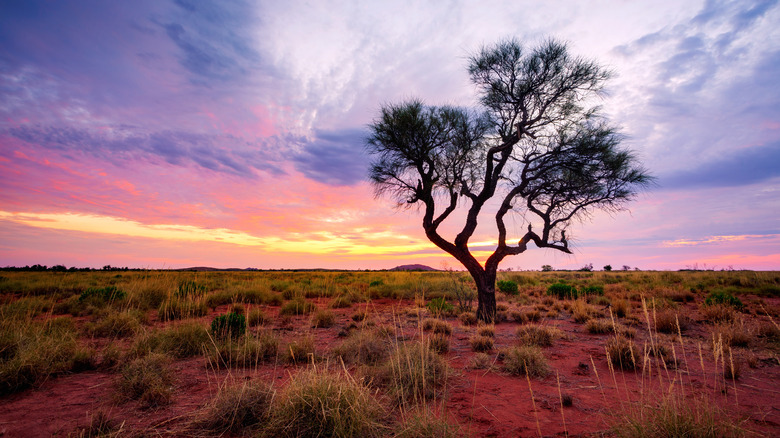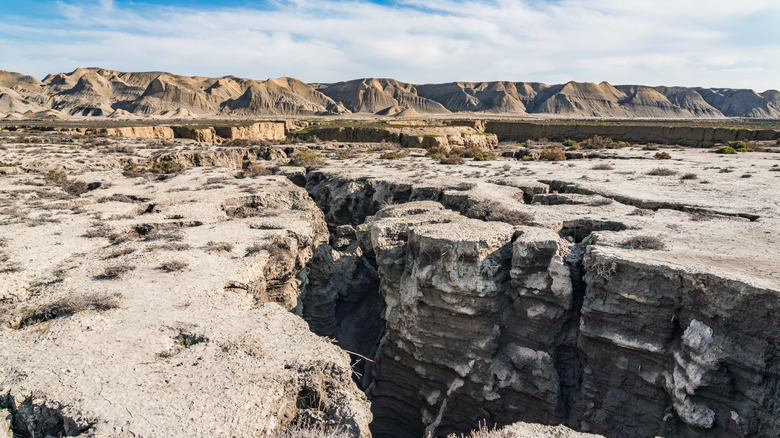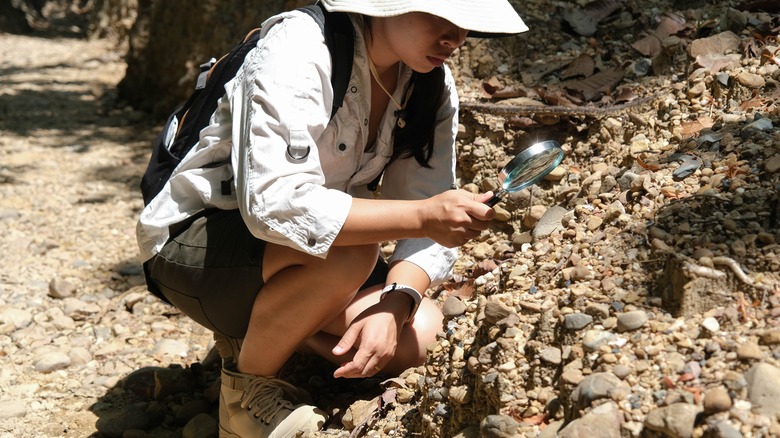The 4-Billion-Year-Old Discovery Hidden Deep Under Australia
It can be hard to conceptualize just how old our planet is. The solar system first appeared around 4.5 billion years ago, per NASA, and it wasn't long after that before planets — including Earth — began to accrete in the sun's orbit. And so, according to Live Science, the Earth is around 4.54 billion years old.
Does that mean all the dirt on the planet is 4.54 billion years old? Not quite. Earth has undergone quite a few changes between now and 4.54 billion years ago, including the development of soil, as well as changes to its crust, according to The Guardian. Over time, tectonic plate movements have shifted around the chunks of land which make up the crust, burying much of it beneath the surface, Live Science notes. But, that doesn't mean Earth's early ancient crust isn't present on the planet somewhere — a fact backed up by a group of scientists who made a big discovery in Western Australia (via SciTech Daily).
The scientists' discovery
The Earth's crust is the layer of land that makes up its surface, according to Intechopen. Around 1% of the Earth's mass is made up of crust, with the rest of the planet being composed of the mantle and the core. The crust, which is made up of minerals and rocks, is part of what makes the Earth unique: Out of all the planets in our solar system, Earth is the only planet with a crust.
So it's probably no wonder that scientists want to investigate the crust and its origins, including how it may have contributed to the evolution of Earth's unique ecosystems. One such scientist is doctoral student Maximilian Droellner, who discovered an ancient chunk of the Earth's crust while doing research in Australia, according to Live Science.
The discovery was the result of lasers. Wanting to find out how old the crust was in a certain area, Droellner used lasers to vaporize bits of a mineral called zircon, according to SciTech Daily. When the element was vaporized, radioactive elements were freed and their decay could be measured, giving an estimated age for the land, according to Live Science. In this case, the evidence showed that a nearly 40,000 square-mile piece of crust under Western Australia could be 4 billion years old.
What the discovery means to scientists
The discovery of a potentially 4-billion-year-old piece of Earth's crust is a big deal, according to researcher Maximilian Droellner, who made the discovery. He says the crust may have been "influencing the geological evolution of [Western Australia] for the past few billions of years and is a key ingredient of rocks formed in [Western Australia] across this time," (via SciTech Daily).
Dr. Milo Barham, who supervised Droellner's research, was also excited about the new discovery, saying, "Studying the early Earth is challenging given the enormity of time that has elapsed, but it has a profound importance for understanding life's significance on Earth and our quest to find it on other planets."
In fact, other pieces of crust have also been found dating back around 4 billion years, which could mean that something big happened around that time period, per Live Science. It remains to be discovered what that event may have been, but it could have something to do with the development of life on Earth. Either way, scientists will surely keep investigating until the truth is found.


